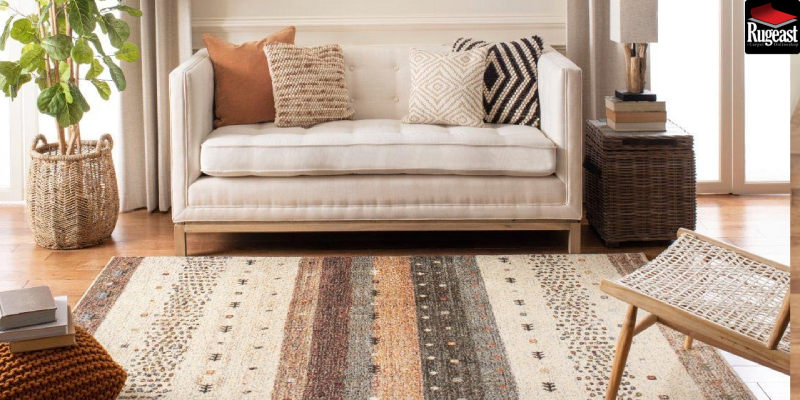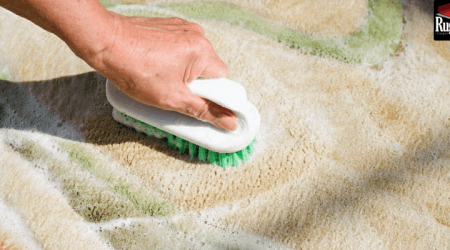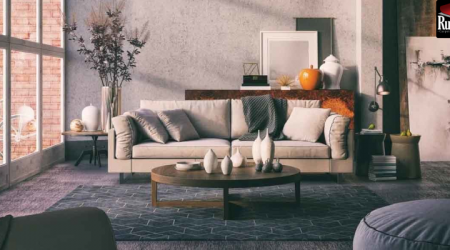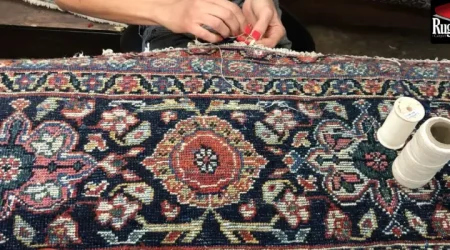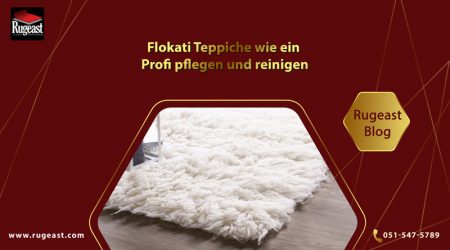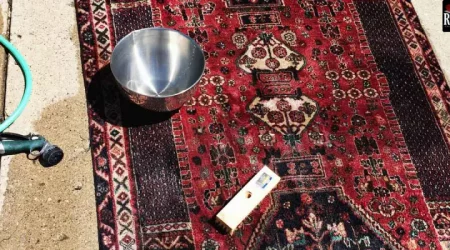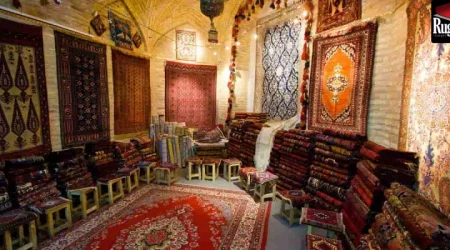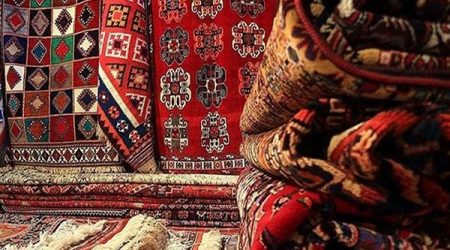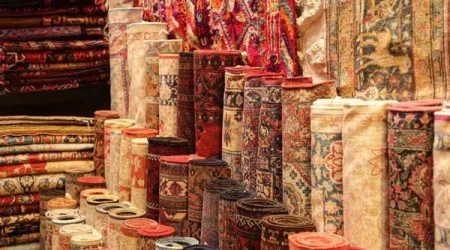Do you know anything about Gabbeh rugs?
A Gabbeh is a handwoven rug with simple patterns and long fibers, primarily used in cold and mountainous regions. Unlike finely woven carpets, Gabbeh has a coarse texture, and its distinctive feature lies in its long and soft fibers, making it popular for decades.
This rug is not only appreciated by people in various regions of our country but also admired by individuals in countries such as Italy, Japan, Canada, Australia, Germany, Kuwait, Kenya, Iraq, Belgium, Qatar, Thailand, New Zealand, Bahrain, China, France, England, Afghanistan, Pakistan, India, and Denmark.
Until a few decades ago, Gabbehs were crafted by skilled carpet weavers from Qashqai, Bakhtiari, and even Azerbaijani communities. They were renowned for their vibrant colors, luster, and exceptional sensitivity. However, over time, Gabbeh production has expanded to other regions, including the Turkmen, as the demand for purchase and use has increased compared to the past.
The simplicity of design, ancient patterns, and the presence of some historical motifs have transformed Gabbeh into a distinct and accessible industry for designers. Gabbehs usually harmonize with any color and pattern, making them suitable for various types of furniture, curtains, and other interior items. Perhaps this is why more than 30 countries in the East and West use Gabbehs for the design of their homes and offices.
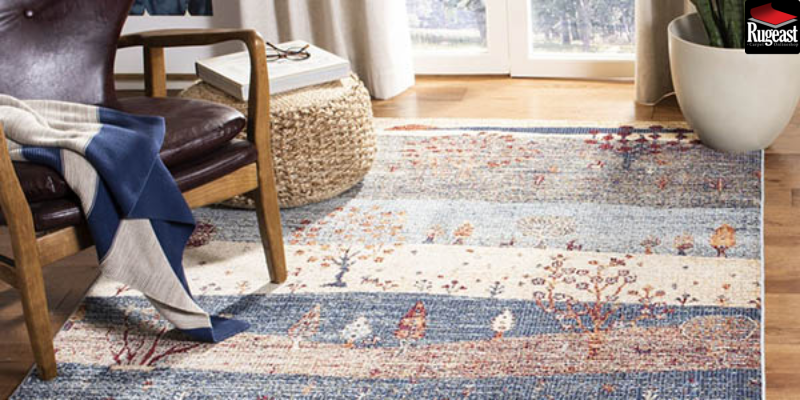
Gabbeh: From Past to Present
Carpet experts believe that the Gabbeh predates carpets and entered the lives of nomadic tribes. Nomads who have been moving from one region to another for thousands of years have always needed soft and comfortable pads for their tents, in every temperature and weather condition, be it snow or rain. With their skills and art, they invented a handwoven product that could be made in a few days, had a simple design, and featured beautiful patterns painted by women who wove it, inspired by the animals and creatures around them—knot-tied threads that are still in use. Patterns like the “cypress tree,” symbolizing life, or the “goat pattern,” symbolizing rain, are still woven into many Qashqai Gabbehs.
The use of Gabbeh was common in nomadic and rural areas until a few decades ago, but with time and popularity, it found its place in Scandinavian countries with extremely cold and harsh winters or in Japan, where they were always seeking soft and colorful foundations, becoming one of the world’s popular handmade crafts. It wasn’t until a few years ago that we Iranians, with an understanding of its intrinsic beauty, also became fond of Gabbeh.
Gabbeh Usage
Gabbeh has long fibers made of wool, and the softness and length of its fibers attract families who want to cover their home floors with a unique and simply woven type of carpet. Furthermore, Gabbeh can harmonize with any taste. However, an noteworthy point is that Gabbeh can be very useful for families with small children. If the floor of a child’s room or a living area is covered with Gabbeh, it can prevent sound production and protect the child from potential harm caused by falls.
Also, due to its reasonable price and unique characteristics, Gabbeh has the most followers. It should be noted that Gabbeh used to be typically woven in dimensions below 3 square meters, but now it is available in dimensions exceeding 6 meters, and enthusiasts of this special handmade weave use it to decorate their homes for sale.
Types of Gabbeh in Terms of Fabric and Materials
Gabbehs are divided into two categories: handwoven and machine-woven. Handwoven Gabbehs are still woven in the traditional and manual way, as the name suggests. On the other hand, manufacturers produce machine-made Gabbehs to reduce costs and produce them in factories for market supply.
In machine-made Gabbehs, designers have the flexibility to change colors and patterns in various designs and dimensions, customizing Gabbehs to fit the tastes and needs of customers.
Difference Between Handwoven and Machine-made Gabbeh
Handwoven Gabbehs, as the name suggests, are crafted by hand, and besides their beauty, naturalness, and value, they may have defects due to weaver mistakes or flaws in the final processing steps that may become unpleasantly noticeable after use. Another problem that can threaten Gabbeh is the attack of pests such as “ladybugs,” which is a significant threat and can almost destroy the handwoven piece. Another danger is moisture in the environment, which may, over time, lead to the destruction of handwoven carpets, and their restoration is not economically feasible.
On the other hand, machine-made Gabbeh has a more regular structure and is made of synthetic fibers. Due to the thickness of the fibers, its lifespan is longer compared to handwoven Gabbeh, which is less prone to risks. Machine-made Gabbehs, due to diversity in design, color patterns, and dimensions, can easily fit into living or working spaces and be an economical and exceptional artistic choice in urban homes.
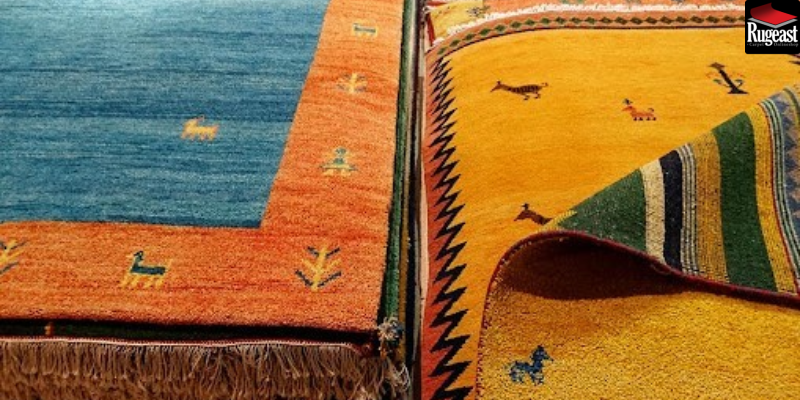
Special Features of Gabbeh Carpets
3. Techniques and Materials:
Gabbeh carpets are exclusively hand-knotted, giving them high quality and durability. The knotting techniques depend on the region and indicate the technical perfection of carpet weavers. Precious materials such as local sheep wool give the carpets their unique shine and softness.
4. Uniqueness and Value:
Gabbeh carpets are not only works of art but also considered an investment. Each carpet is unique and tells its own story. Due to their rarity and quality, they are often regarded as valuable and popularity-gained assets.
5. Gabbeh Carpets in Modern Interiors:
Although Gabbeh carpets were traditionally used in the styles of rural homes in the past, they now find their place in modern and contemporary interiors.
Their unique designs and vibrant colors add a special touch to each room, creating a warm and pleasant atmosphere.

